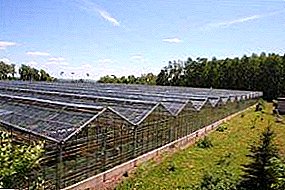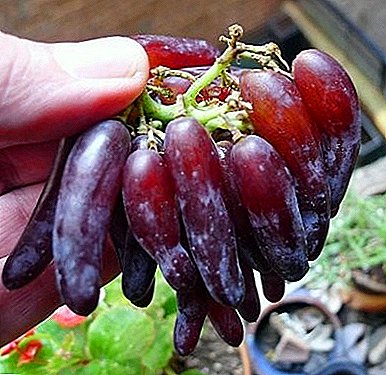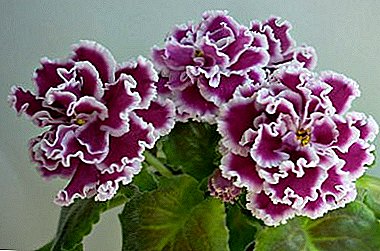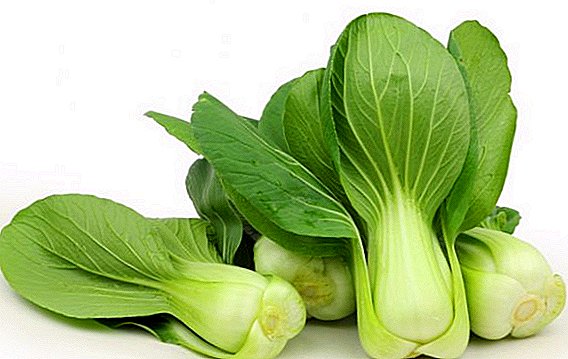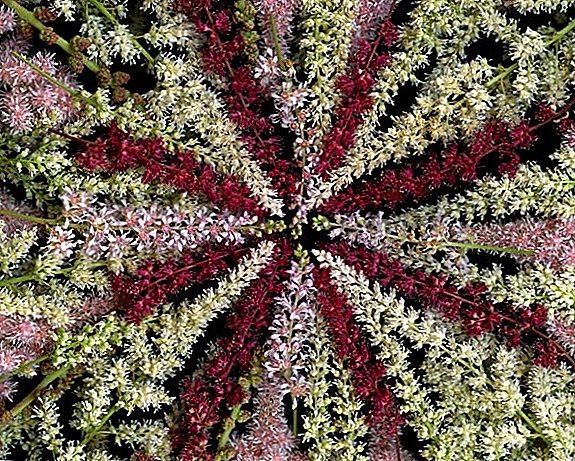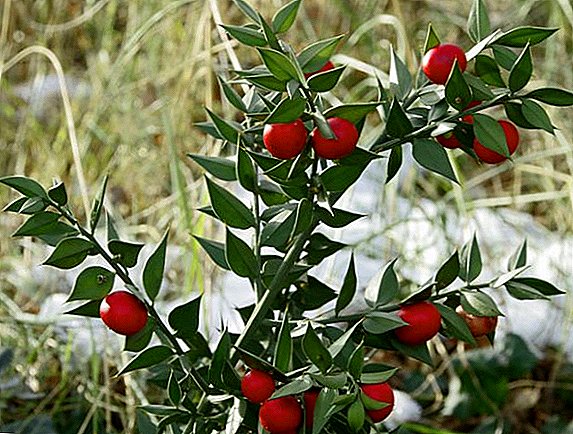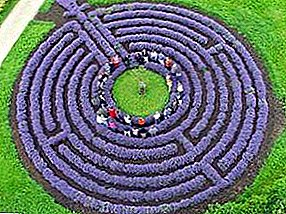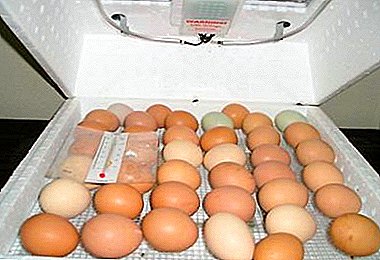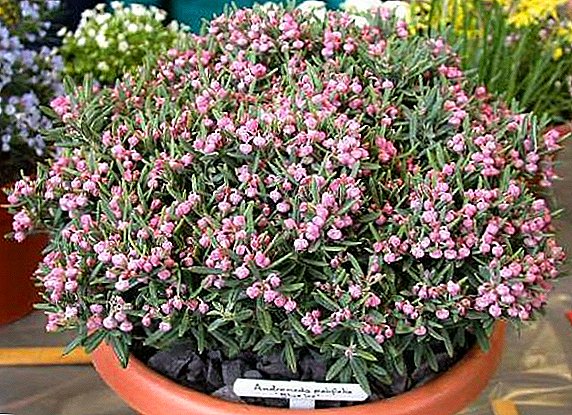 Andromeda is known to many domestic gardeners. This graceful evergreen plant can decorate any landscape. That is why this exotic shrub every year conquers an increasing number of vacant areas and becomes a real highlight of landscape art. However, not everyone knows how to properly care for this plant and what is needed in order to create optimal conditions for it. In this article we will understand what is andromeda, and also find out the main secrets of its successful cultivation in the garden.
Andromeda is known to many domestic gardeners. This graceful evergreen plant can decorate any landscape. That is why this exotic shrub every year conquers an increasing number of vacant areas and becomes a real highlight of landscape art. However, not everyone knows how to properly care for this plant and what is needed in order to create optimal conditions for it. In this article we will understand what is andromeda, and also find out the main secrets of its successful cultivation in the garden.
Botanical description
Andromeda many-leafed is an exotic evergreen shrub of the heather family. The plant has a rather characteristic and recognizable appearance. The stalk of a typical representative of the species is creeping, little branched, rooting, with a smooth structure. The shoots of the plant rooting, ascending, dense and tough, reddish-brown or reddish-brown. Plant height is in the range of 15-40 cm.

The leaves on the stem are leathery and have a lanceolate shape, with edges wrapped to the ground. In length they reach from 1 to 5 cm, and in width - no more than 8 mm. The leaves are bright and saturated green shades. The upper part of the sheet with a characteristic sheen, while below the leaves matte, with a pale wax bloom.
The rhizome of the andromeda is elongated, thin, in its form resembles a cord located in a mossy pillow. With active growth, it can produce several above-ground shoots at once, from which independent plants grow.
Did you know? A characteristic feature of the root system of the andromeda is the so-called mycorrhiza - mutually beneficial coexistence of the rhizome of a shrub with various strains of non-pathogenic soil fungi.
Andromeda blooms from August to September. At this time on the shrub appear drooping, pinkish (from pale pink to light red shades) flowers on thin reddish pedicels. They are collected in characteristic inflorescences of several pieces. The petals of flowers are often accrete, the rim is ovoid or spherical. Stamens on a flower are formed about 10 pieces. After flowering on the plant, a pyatignezdny fruit-box, spherically flattened with numerous seeds, ripens.

Distribution and habitat
The natural habitat of the andromeda is the forest and tundra zones of North America and Eurasia, down to the lower alpine geographic belt. Often in natural conditions, the shrub can be found on the wetlands of coniferous forests, as well as near peatlands or wetlands. In the CIS, the plant grows in the Carpathian region, as well as in Siberia and the Far East. In this region, the shrub is a typical representative of the flora of sphagnum or moss bogs.
Throughout the season, such perennial plants will delight you with continuous decorativeness: host, Badan, astilba, geykher, hellebore, stonecrop, viola, tradescantia.
Use in landscape design
Andromeda is actively used in landscape design in almost any combination of both annual and perennial species. But most often the shrub serves as an ideal complement to the so-called Alpine slides. This part of the landscape is an artificially created rocky terrain in miniature. It provides for the creation of foot, slopes, mountain tops, as well as bare rocky areas with typical vegetation for each zone. Andromeda in this case becomes the main highlight of the entire composition, as well as one of the dominant species.

In addition, the shrub is widely used as a groundcover, which is often used to combat unwanted vegetation in the garden. A solid carpet of andromeda completely inhibits the development of other species, this makes it possible not only to overcome the weeds and give the garden individuality, but also completely solve the problem of mowing. Therefore, a solid hat from the bush is ideal for landscaping both small and voluminous areas.
Did you know? Andromeda is widely used for medical purposes. A variety of shrub extracts are used to manufacture medicines to combat cough, headaches, and pathologies of the female reproductive system.
Growing at home
Exotic ornamental plants cause the majority of our compatriots not only aesthetic pleasure, but also a lot of trouble. Country plots often do not have all the necessary conditions in order to grow atypical for our area flora. 
To create a cozy plot, you will be interested to learn about landscape design, handicrafts and garden sculptures, namely: a flower garden of wheel tires or stones, wattle, gabions, rock arians, ladybugs, fencing for beds, solar wax refinery.
Conditions of detention
For planting andromeda in their own cottage fit sunny or shade areas. But the plant feels best in the penumbra, near the larger ornamental species.

A shrub is planted in small holes about 30 cm deep, from which native soil is completely removed. This process is one of the most important conditions for the cultivation of a plant, since it does not tolerate neutral or alkaline conditions, so the andromeda should be grown exclusively on artificial substrates.
Important! In the open and lighted areas, the andromeda grows in the form of high compact bushes of regular shape, in the penumbra the bush becomes more sparse and less high.
Soil and fertilizer
Andromeda has many leaves, like all members of the Vereskov family, loves acidic fertile soils with a pH in the range of 3.5-5, therefore, shrubs should be planted exclusively on acidic fertile substrates. However, soil conditions do not meet every requirement on every household plot. Therefore, instead of native soil, a specially prepared soil mixture consisting of peat, sand, sawdust, fallen needles (in any combinations) is poured onto the plot.
The soil should be checked for acid reaction using a special indicator, otherwise the plant may die. In case of insufficient acidity, the substrate must be artificially acidified using peat.

Such soil does not require additional fertilizer, however, before planting it, it is necessary to pour it with acidified water at the rate of: 10 liters of liquid per 1 sq. M. m flower beds. The solution is prepared on the basis of citric (1 tsp. / 3 l of water), oxalic (1 tsp. / 3 l of water), acetic (10 g / 1 l of water) or 9% malic acid (10 g / 1 l water). But diluted sulfuric acid (5-10 ml / 1 l of water) is best for this, but getting it is not so easy.
It will be useful for you to learn more about the different types and properties of soil, fertilizer systems for them, how to independently determine the acidity of the soil on the site, how to deoxidize it, and also find out what it depends on and how to improve soil fertility.
Andromeda must be fed once a year., in early spring, before the onset of active growing season. Complex mineral fertilizers that are acidic ("Kemira Universal" or fertilizers for hydrangeas) are best suited for this purpose.
Mineral fertilizers are applied in a dry form, with the calculation of 1 tbsp. l. / 1 bush, by uniform sprinkling of fertilizer around the base of the bush. Additional feeding is not necessary, but to improve the growth and flowering plants it must be fed 1-2 times during the period of active budding and flowering.

Watering and moisture
Andromeda requires regular watering, especially in hot weather. The plant needs to be watered daily, at least 1-2 times a day, and in very hot weather near noon, it is necessary to additionally spray the branches of the shrub from the spray gun. In the case of long rainy periods, watering the bush is carried out as necessary.

For irrigation, use clean water at room temperature. Once every 10-15 days, the soil should always be acidified once. To do this, water for irrigation is diluted with a small amount of citric (1 tsp. / 3 l of water), oxalic (1 tsp. / 3 l of water), acetic (10 g / 1 l of water) or 9% malic acid (10 g / 1 l of water).
Important! In hot weather, andromeda bushes must be mulched with sawdust or fallen needles, this will help protect the plant from possible overheating.
Relation to temperature
This plant does not tolerate prolonged overheating, so before planting it is necessary to make sure that that the bed with shrubs will be in the most wet and protected from the scorching sun rays place.
The optimum temperature for this shrub during warm periods of the year is within + 20-25 ° C, but the plant is able to withstand higher temperatures. Therefore, the most aesthetically valuable specimens of andromeda can be found in a warm subtropical climate. In order for the plant in the heat to feel comfortable, do not forget about the additional watering.
Wintering often takes place at the andromeda favorably. This shrub is able to withstand prolonged frosts, up to -45 ° C. But so that the frosts do not affect the appearance of the plant, it must be covered up. To do this, you can use a special covering material for plants or use small coniferous twigs.

Breeding
Andromeda reproduces quite well, regardless of the climatic conditions of the growing region. That is why the lush and thick flowerbed of andromed manages to get quite quickly. The process is often carried out in two ways: with the help of seeds or vegetatively.
Seeds
After flowering on the shrub, small fruit-boxes are formed, which contain seeds, they are the main source of seed. Seeds are sown abundantly, directly into an open, previously prepared soil (acidified substrate of peat, sand, sawdust and fallen needles in any combination). The best period for sowing is the end of autumn. Seeds are sown in small wells with a depth of not more than 5 cm, after which they are plentifully watered with acidified water prepared according to the procedure described above.

Andromeda seedlings are observed in the spring, after the first tangible thaw. At this time, it is necessary to fertilize and weed the sprouts, we can thin out the crops if necessary. To improve seed germination, they can be first germinated in pots at room temperature. To do this, they are sown in small garden containers 4-5 weeks before the onset of a thaw, and then the seedlings are planted in open soil.
Vegetative
Vegetative reproduction of this shrub occurs by dividing the rhizome or grafting. When reproducing with a rhizome in the middle of spring, you need to dig up young bushes formed on a bed, then carefully separate them from the parent root. After that, young bushes can be transplanted to a new place. In order for the plant to acclimatize as quickly as possible, it must be fed with complex fertilizers, and it must be watered abundantly for 20-30 days.

Andromeda cuttings are harvested in the second half of June, immediately after flowering. To do this, small twigs about 5-7 cm long are cut from annual shoots, after which they are planted in a greenhouse or in an open environment on an artificial substrate (acidified mixture of peat, sand, sawdust and fallen needles). When growing in open soil cuttings must be covered with plastic wrap to create the greenhouse effect. For 20-30 days, the plants poured abundantly with water, after the cuttings have taken root, they are shown standard care. For the winter, such plants should always be covered with a layer of peat of about 3 cm, as well as a spunbond. By the next spring, the cuttings are ready for transplanting to a permanent place.
Important! To increase the efficiency of rooting, the cuttings must be treated with special growth stimulants for small shrubs.
Possible difficulties in growing
The main difficulties that gardeners face in growing andromeda are the following:

- Insufficient acidity of the soil. Even with the complete replacement of soil from a bed to an artificially acidified one, in a few months, due to natural processes, the soil is completely restored to a neutral pH level. Therefore, throughout the growing season, it is necessary to monitor this indicator with the help of special indicators.
- Flooding of plants with melt water. This leads to wilting and death of the shrub, so each bed should be necessarily well drained, and thawed water should, if possible, be removed outside the site.
- Steaming bushes. The process arises due to the late opening of the plant; in order to prevent it, the enveloping layer must be removed immediately after the first thaw.
- Watering excessively hard water. This moisture causes salinization of the soil, which leads to inhibition of growth and death of plants. To avoid salinization, andromeda should be watered with rain or distilled water.
Pests, diseases and prevention
The most common diseases in andromedic multifilament include:

- mixed chlorosis - caused due to a lack of iron, potassium, magnesium and nitrogen in the soil, the disease manifests itself in the form of small yellowish spots on the leaflets;
- leaf necrosis - is a consequence of a lack of nutrients, soil acidity and other growing conditions, manifested as small dark spots that grow over time to complete destruction of the leaves;
- gray rot - an infectious disease caused by a microscopic fungus Botrytis cinerea, the disease manifests itself as a light gray bloom on the shoots, which gradually leads to falling off of the foliage and the death of the plant;
- entomozy - a complex of diseases caused by insects, which is often the result of the defeat of the bush pests of the family Curculionidae: insects actively eat the foliage, which leads to its deformation and necrosis.
Did you know? Copper sulfate (copper sulfate) was first obtained in 1648, thanks to the German chemist Rudolf Glauber. In the food industry, this substance is registered as a food additive E519 - a preservative.
The main ways to prevent diseases in andromeda multifaceted:

- soil sterilization before planting;
- timely fertilizing with mineral fertilizers;
- observance on a bed of optimal soil and water conditions;
- soil acidity control;
- use soft water for irrigation;
- preventive inspection of plants;
- periodic treatment of the flower bed with protective equipment (copper sulfate solution, Topaz, Fundazol).
Andromeda many-leaved is a graceful exotic plant that can bring aesthetic pleasure throughout the growing season. However, the cultivation of this shrub requires special conditions. The plant needs rich, but acidic soil, special light and water regimes, as well as preventive treatment against pests. Only under all these conditions, the cultivation of andromeda will be successful.



